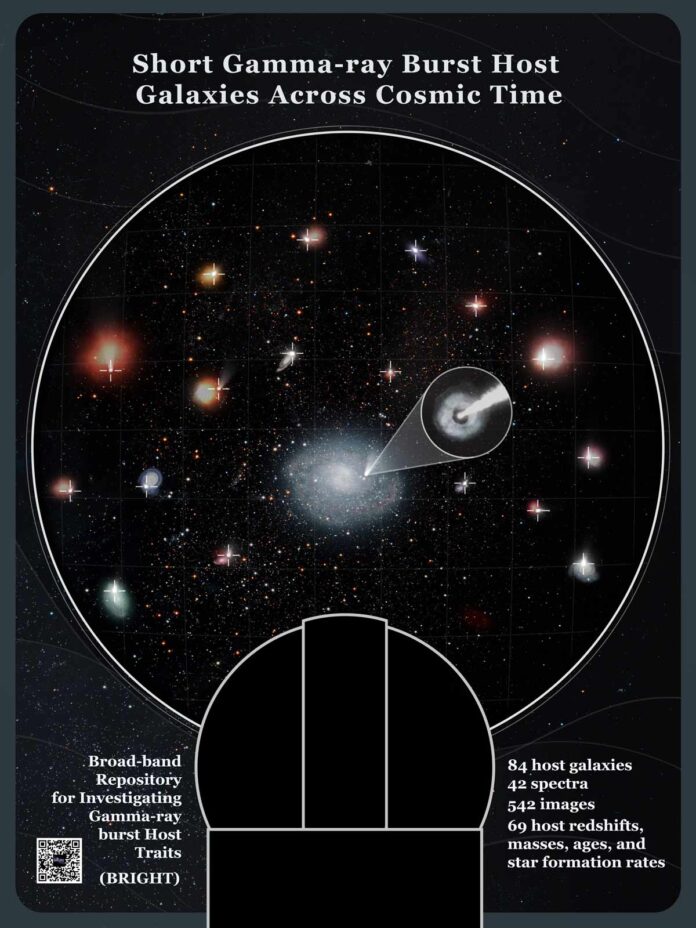The galactic origins of 84 short gamma-ray bursts (sGRBs) — produced by the collision of two neutron stars. These have now been identified in the most comprehensive inventory to date. To identify the sources of these sGRBs, a team led by Penn State astronomers used data from several highly sensitive instruments at the W.M. Keck Observatory, Las Campanas Observatory, MMT Observatory, and Gemini Observatory, as well as some of the most sophisticated galaxy modelling ever used in the field.
SGRBs are brief bursts of intense gamma-ray light produced when two neutron stars collide. To honour the fact that sGRBs are among the brightest explosions in the universe. The team has named their catalogue BRIGHT (Broadband Repository for Investigating Gamma-ray burst Host Traits). And they have made all of their data and modelling products available to the public.
Gamma-rays from sGRBs last only seconds. The optical light produced by the event can last for hours before fading below detection thresholds. It is known as an afterglow. NASA’s Neil Gehrels Swift Observatory discovered SGRB afterglows for the first time in 2005. This mission operations centre is located at Penn State. Astronomers have spent the last 17 years attempting to determine which galaxies produced these powerful bursts. As the stars within a galaxy can provide insight into the environmental conditions required to produce these events. And it can connect them to their neutron star merger origins. GRB 170817A was discovered just seconds after gravitational wave detectors observed the binary neutron star merger, GW170817.
Understanding sGRB host galaxies is critical to understanding the blasts themselves. As it provides information about the types of stars that created them as well as their distance from Earth. Because neutron star mergers produce heavy elements such as gold and platinum. The findings will help scientists understand when precious metals first appeared in the universe.
The first paper in the study, published in The Astrophysical Journal, discovered that sGRBs exist earlier in the universe. And at greater distances from the centres of their host galaxies than previously thought. Surprisingly, several of these explosions were discovered just outside their host galaxies. As if “kicked out,” raising questions about how they were able to travel so far.
The second research paper, investigated the characteristics of 69 of the identified sGRB host galaxies. According to the findings, approximately 85% of them are young, actively star-forming galaxies. It is in stark contrast to previous studies that characterised the population of sGRB host galaxies as nearing death. As a result, neutron star systems can form in a variety of environments. And many of them have short formation-to-merger timescales.
There are many unanswered questions about how neutron stars merge and how long the process takes. Observing sGRBs and their host galaxies, on the other hand, provides one of the best perspectives for answering them. It can also provide more data about neutron star mergers and their hosts at much greater distances. The new sGRB host catalogue will be a critical reference point in the coming decade for understanding the full evolution of these systems over cosmic time.
The James Webb Space Telescope is poised to advance our understanding of neutron star mergers and how far back in time they began. It will be able to detect the faintest host galaxies that exist at very early times in the universe,

